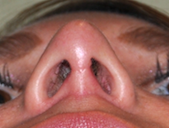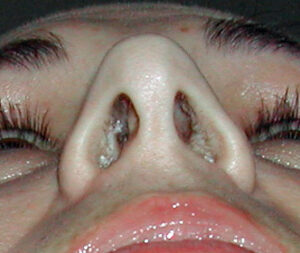The open rhinoplasty dominates the approach used in surgical nose reshaping today. While there is certainly a role for the closed approach in some patients the visibility of performing certain technical maneuvers in some primary and most secondary patients is unrivaled. Ever since its introduction in the 1990s the open approach has always had the fear for some of how well the transcolumellar incision would heal. And certain aspects of it such as an inverted V or broken line incision pattern is one technique that has proven to offer superior open rhinoplasty scar results.

In the October 2020 issue of the Aesthetic Plastic Surgery journal an article was published entitled ‘Comparison of Rapid Absorbable Sutures with Nonabsorbable Sutures in losing Transcolumellar Incision in Septorhinoplasty: Short-term Outcomes.’ A prospective study of sixty-four (64) patients over an eight month period was done assessing 6-0 prolene vs 6-0 polyglycolic resorbable sutures for closure of the open rhinoplasty columellar incision, evenly split in the study group. The prolene sutures were removed one week after surgery. Photographs of the columellar scars at three months after surgery were evaluated and scored for scarring, color and notching of the edges. Suture removing discomfort was assessed with visual analogue scale scores. A satisfaction survey was also filled out by all patients.
Their results showed no significant difference between the two types of suture used in terms of all evaluated measures of scar quality and appearance as well as patient satisfaction.

Dr. Barry Eppley
Indianapolis, Indiana


